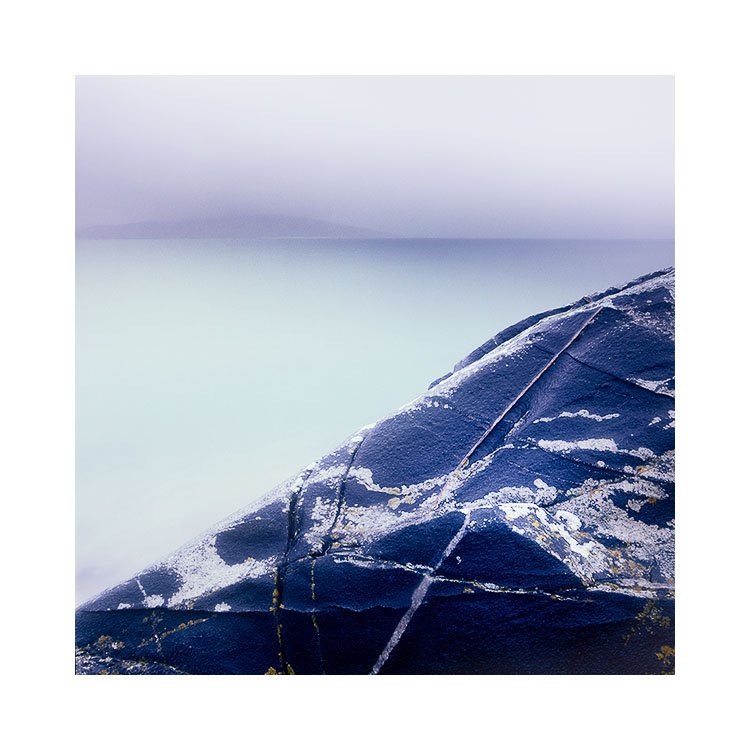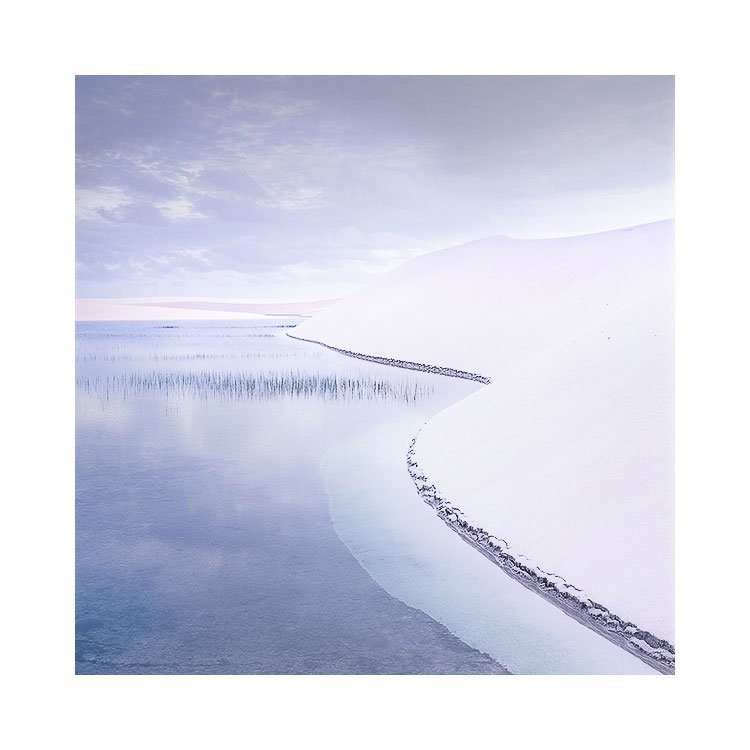Last November I spent two weeks on the Isle of Harris running two workshops. I go to Harris specifically in November for the ‘bad’ weather and have been doing so since 2010.
Yesterday I was discussing how I enjoy making pictures where parts of the scene become hard to read / understand, or are just reduced in some way.
Had the image above been shot in fair weather, the background island of Tarransay would have more definition, and in my view, that definition would be too much information for the photograph. By using rain and fog, distant subjects become soft and sometimes veiled in a way that make them more suggestive.
The forecast for the two weeks was not ‘good’. In fact, in the 2nd week, there turned out to be two or maybe three days where the weather was so wet that we wondered if we would get out at all. We did, and I think I would be correct if I said that the group agreed that these were often the best days for atmosphere in the images we worked on and edited during our day time sessions.
I’m not afraid of the rain for my camera. I am more afraid of shooting in boring light, which to me are those days where the sun is out and the contrasts are high. There is no atmosphere to speak of, and any sense of mood or dream quality one wants to put into their work won’t be there.
Atmosphere (read that as rain, mist, and generally bad weather) is perhaps the most attractive reason for shooting landscape photographs in Scotland. My country has atmosphere in spades, and it is never present during sunny days where everything is dry and clear.
I like to obfuscate. I find mystery in what has been either left unsaid, or is presented in a way where we have to work at seeing what is there. I like things to almost disappear : to live on the edge of perception. This is one of the reasons why I like to shoot in inclement weather, and will try to work as best as I can when the weather may be challenging.
I could not create the image above in fair weather. It had to be made on one of those ‘end of the world’ days, when you feel as though the sun may never come out again. This is a regular feature of the Scottish landscape during the winter months. The gloom can be overwhelming, and it can affect one’s mood, and judgement. I have often found it intriguing that moody images often look good to view, but are rarely good experiences to shoot: we are often overcome by the mood and feeling that pervades our awareness, but rarely do I look at photos from such gloomy days and feel gloomy. I often just appreciate the qualities of light and drama in these kinds of photographs.
To me, we have to remove our feelings of how bad the weather is while shooting, and instead focus more on what these kinds of bad days provide us with in terms of quality of light, of an unusual sense of atmosphere and how this will be translated into the images we come away with.



























